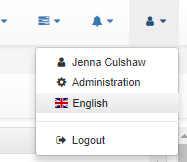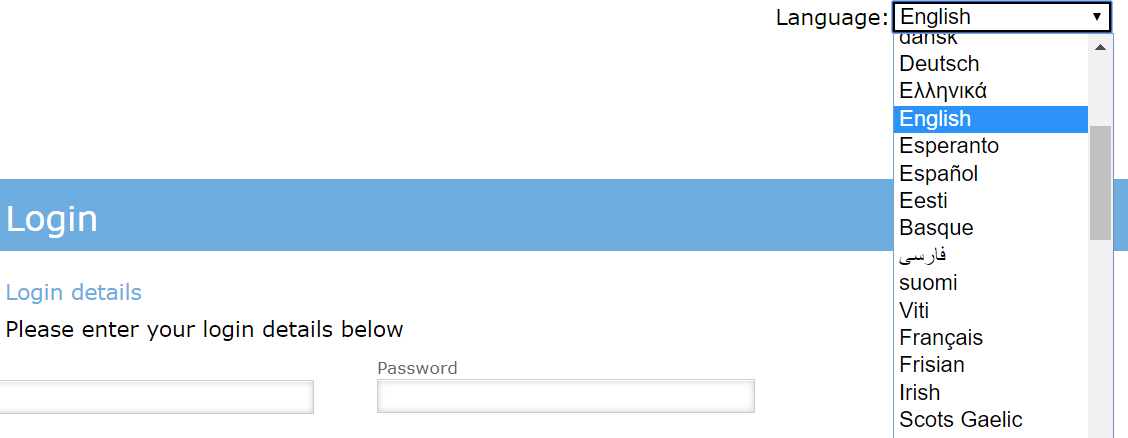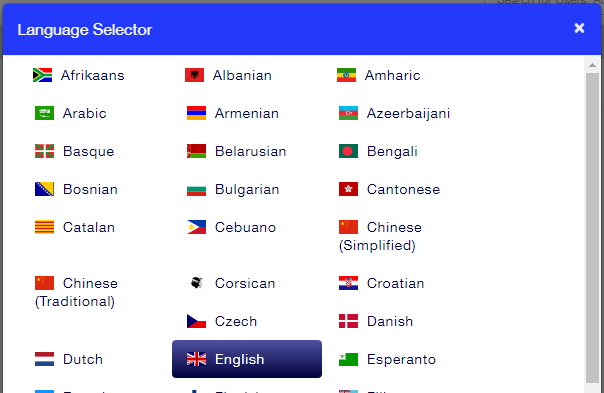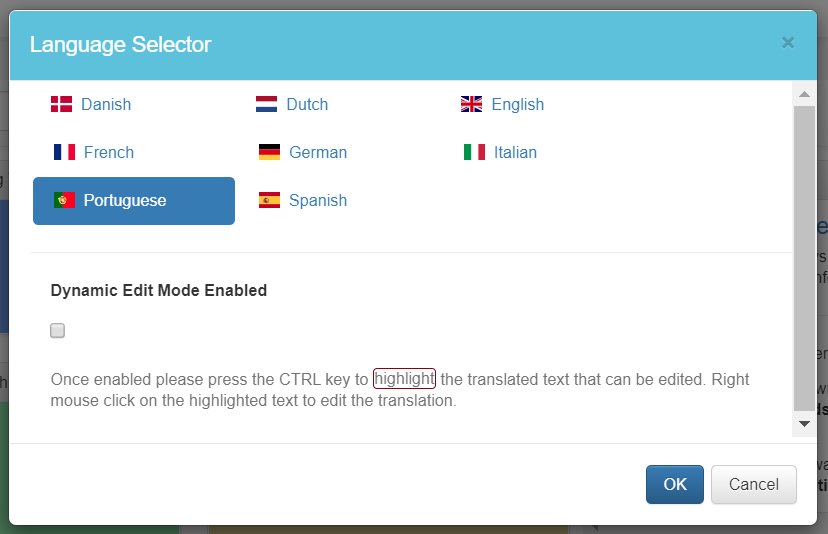Versions Compared
Key
- This line was added.
- This line was removed.
- Formatting was changed.
| Live Search | ||||||||
|---|---|---|---|---|---|---|---|---|
|
The translation tool available in the system platform allows each of your users to view your accessplanit system accessplanit platform in other languages. You can also enable our 'In-line Edit Mode' to make global changes to the translations, any changes you make to translations using the In-Line Edit Mode will apply for every user that views your accessplanit system accessplanit platform in that language.
To learn how to use the Translation tool on the systemplatform, click here.
Where to find the Translation area
You can toggle the language used in the system the platform from the top right, below the Administration menu option.
 Image Removed
Image Removed Image Added
Image Added
The language can also be set on the login screen, and within your Shopping Basket & Learner Portal

You can also view and update the language selection for each of your users via the Users DataGrid using the Preferred Language field.
How does the Translation tool work?
The accessplanit translation tool works by using Google Translate and updating the content of your accessplanit system accessplanit platform into your choice of language!
The Translation Tool will update all text that is 'off the shelf' within your systemplatform; this includes all standard words, phrases, field names, and menu options, so that your users can navigate around your system your platform in their chosen language with ease.
The Translation Tool has been specifically designed to not translate any text that you or your users add into your systemplatform; for example user's names, course names, course descriptions and venue names are not translated.
What Languages are available?
There are 113 languages available (including Klingon!)
- Afrikaans
- Albanian
- Amharic
- Arabic
- Armenian
- Azeerbaijani
- Basque
- Belarusian
- Bengali
- Bosnian
- Bulgarian
- Cantonese
- Catalan
- Cebuano
- Chinese (Simplified)
- Chinese (Traditional)
- Corsican
- Croatian
- Czech
- Danish
- Dutch
- English
- Esperanto
- Estonian
- Finnish
- Fiji
- French
- Frisian
- Galician
- Georgian
- German
- Greek
- Gujarati
- Haitian Creole
- Hausa
- Hawaiian
- Hebrew
- Hindi
- Hmong
- Hungarian
- Icelandic
- Igbo
- Indonesian
- Irish
- Italian
- Japanese
- Javanese
- Kannada
- Kazakh
- Khmer
- Klingon
- Klingon (pIqaD)
- Korean
- Kurdish
- Kyrgyz
- Lao
- Latin
- Latvian
- Lithuanian
- Luxembourgish
- Macedonian
- Malagasy
- Malay
- Malayalam
- Maltese
- Maori
- Marathi
- Mongolian
- Myanmar
- Nepali
- Norwegian
- Nyanja
- Pashto
- Persian
- Polish
- Portuguese
- Querétaro Otomi
- Punjabi
- Romanian
- Russian
- Samoan
- Scots Gaelic
- Serbian
- Serbian (Latin)
- Sesotho
- Shona
- Sindhi
- Sinhala
- Slovak
- Slovenian
- Somali
- Spanish
- Sundanese
- Swahili
- Swedish
- Tagalog
- Tahitian
- Tajik
- Tamil
- Telugu
- Thai
- Tongan
- Turkish
- Ukrainian
- Urdu
- Uzbek
- Vietnamese
- Welsh
- Xhosa
- Yiddish
- Yoruba
- Yucatec Maya
- Zulu
 Image Added
Image Added
What is the Dynamic Editor?
The Translation Dynamic Edit Mode allows you to make changes to the system platform translations. The changes you make will be applied to every user so you will not need to ask everyone to make these changes individually.
 Image Removed
Image Removed Image Added
Image Added
On this page:
| Table of Contents |
|---|